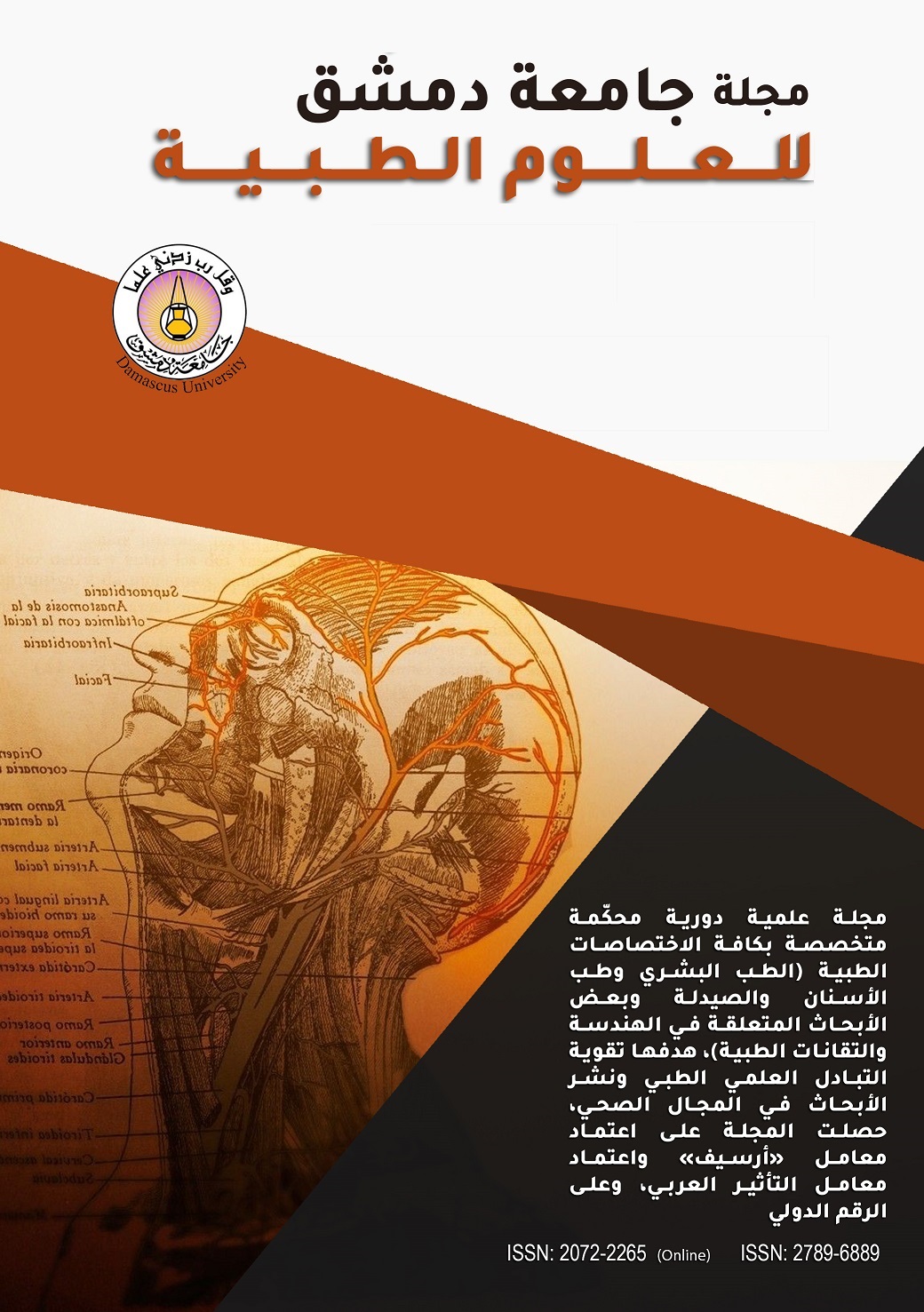Evaluation of the Effect of Functional Treatment for Skeletal Class II Patients on the Temporomandibular Joint Using Cone Beam Computed Tomography
Keywords:
functional treatment, temporomandibular joint, condyle, cone-beam computed tomography, Twin-block applianceAbstract
Background and aim of the study: Functional treatment of skeletal Class II malocclusion is one of the most important treatment options in mixed dentition. This research aimed to evaluate the effect of the Twin-block appliance on the temporomandibular joint (TMJ) of patients with class II division 1 malocclusion using cone beam computed tomography (CBCT).
Materials and methods: The study sample consists of 19 Syrian children (8 males and 11 females) selected from the orthodontic clinic at Damascus University. All subjects aged from 9.4 to 12 years and had skeletal and dental Class II division 1 malocclusion resulting from the retrusion of the mandible (SNB<76). The patients have normal respiration and no one has previously subjected to any orthodontic treatments. Children were treated with Twin-block appliance and CBCT images were taken before treatment (T0) and after eight months of treatment (T1). Then, the MimicsTM Software was used to calculate some relevant linear parameters of the TMJ as well as the volume of condyle. The obtained data rtclecl les T test pesentes 166 Results:The current study showed that no significant differences were observed in all variables between the right and the left side of the temporomandibular joint. The sagittal anterior joint space decreased, while the sagittal superior and posterior joint spaces as well as the coronal central joint space increased significantly (P<0.001). The condylar height, the greatest condylar anteroposterior diameter (P<0.001) and the condylar volume also increased significantly after treatment (P=0.007).
Conclusions: The functional treatment with the Twin-block appliance increases the condylar volume. Moreover, the condyle position within the glenoid fossa changes to more downward and forward positions. CBCT can quantify linear changes of the TMJ and the condylar volume resulting from using the Twin-block appliance.

